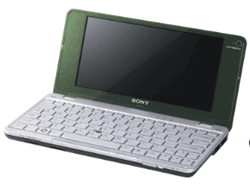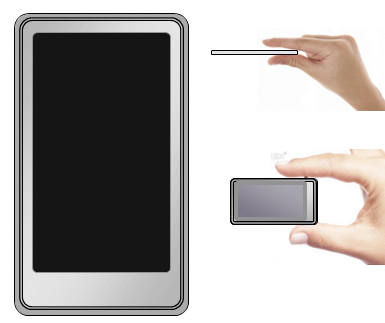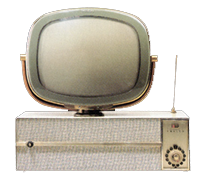 Admittedly I’m no Michael Pachter when it comes to foretelling the future of video games, but with Microsoft exec Robbie Bach saying that we won’t see a new Xbox 360 for a while, the temptation to speculate is too overwhelming. So join me as I wildly predict when the next round of consoles will come along.
Admittedly I’m no Michael Pachter when it comes to foretelling the future of video games, but with Microsoft exec Robbie Bach saying that we won’t see a new Xbox 360 for a while, the temptation to speculate is too overwhelming. So join me as I wildly predict when the next round of consoles will come along.
Tag Archives | Sony
A Vaio For Your Pocket
 I haven’t run into a Sony Vaio P notebook here at CES in Las Vegas yet, but judging from Gizmodo’s hands-on report and photos, it’s going to be worth the effort to track it down for some hands-on time. The P is a 1.4-pound pocketable machine that has an 8-inch screen and runs Windows Vista, and while it’s far from the first attempt to cram Windows into such a tiny device–micro-Windows pioneer OQO debuted a new version of its system with an OLED screen today–I like its looks. The keyboard looks like it’s trying to reduce a standard notebook-sized design into a smaller space, which is appealing approach; most of the really, really li’l Windows machines I’ve seen have been undone by oddball keyboards. And the Vaio has a ThinkPad-style pointing nub, which makes sense on a gadget this small and eliminates the need to reserve real estate for a touchpad.
I haven’t run into a Sony Vaio P notebook here at CES in Las Vegas yet, but judging from Gizmodo’s hands-on report and photos, it’s going to be worth the effort to track it down for some hands-on time. The P is a 1.4-pound pocketable machine that has an 8-inch screen and runs Windows Vista, and while it’s far from the first attempt to cram Windows into such a tiny device–micro-Windows pioneer OQO debuted a new version of its system with an OLED screen today–I like its looks. The keyboard looks like it’s trying to reduce a standard notebook-sized design into a smaller space, which is appealing approach; most of the really, really li’l Windows machines I’ve seen have been undone by oddball keyboards. And the Vaio has a ThinkPad-style pointing nub, which makes sense on a gadget this small and eliminates the need to reserve real estate for a touchpad.
The Vaio P is due to ship in February and starts at $900, making it pricier than a netbook…but maybe a bit cheaper than you’d have guessed a gimzo like this from Sony would have been in years past.
4 comments
Sony to Unveil a Touchscreen Walkman?
![]() [UPDATE: In the first version of this post I assumed this was a phone–as a commenter points out, that’s not part of the rumor. Post amended to reflect that…]
[UPDATE: In the first version of this post I assumed this was a phone–as a commenter points out, that’s not part of the rumor. Post amended to reflect that…]
Sony Insider is reporting that Sony will use CES as the launchpad for the first touchscreen Walkman. It says that “trusted inside sources” have told it that the device will have a widescreen OLED display, 16GB or 32GB of memory, Wi-Fi, a Web browser, and YouTube integration, among other features. Oh, and an FM radio.
There’s nothing in this description that sounds particularly fanciful, but neither is there anything about the Sony Insider report that rings especially true. Especially since the “product shot” included with the story looks like someone whipped it up in Photoshop in a few minutes:

I can do Photoshop as well as the next gossipmonger, and therefore have fashioned Technologizer’s own official mockup of what Sony’s device may look like–not a photograph, but an incredible simulation:

7 comments
Sony to Close Last U.S. TV Plant (Waitaminnit, They Still Make TVs in the U.S.?)
 I suspect that many folks shared my immediate reaction to today’s sad news that Sony will lay off 560 Pennsylvania factory workers and end TV production in the U.S.: utter astonishment that Sony was still making TVs in the U.S. at all. Or, for that matter, that anyone still made TVs in this country. Or consumer electronics devices of any sort, actually. (At least there’s still such a thing as an American-built PC, thanks to Dell and other companies, though I kind of suspect I may live to see the closure of the last U.S. computer factory.)
I suspect that many folks shared my immediate reaction to today’s sad news that Sony will lay off 560 Pennsylvania factory workers and end TV production in the U.S.: utter astonishment that Sony was still making TVs in the U.S. at all. Or, for that matter, that anyone still made TVs in this country. Or consumer electronics devices of any sort, actually. (At least there’s still such a thing as an American-built PC, thanks to Dell and other companies, though I kind of suspect I may live to see the closure of the last U.S. computer factory.)
As far as I knew, the end game for the once proud domestic consumer electronics manufacturing industry came years ago; if I’d known I could still have bought a TV set made stateside, I would have tried to do so. (The Sony plant wasn’t even all that old–it was founded to build projection TVs in 1990, and later switched to LCDs.)
With the Sony plant’s shutdown next February, anyone know if there’s a single gadget left that will roll off an American assembly line? Buying stuff from icons of American industry like HP and Apple doesn’t help–not only do most of their products originate in Asia and elsewhere, but they’re generally made by contract manufacturers.
No comments
Yet Another Reason Not to Buy Motorola’s $2000 Phone
 You’ve just spent two grand on Motorola’s Aura, the cell phone that thinks it’s a Swiss watch. You suffer sudden buyer’s remorse. No problem–you can just put it on eBay and recoup at least part of your dough, right?
You’ve just spent two grand on Motorola’s Aura, the cell phone that thinks it’s a Swiss watch. You suffer sudden buyer’s remorse. No problem–you can just put it on eBay and recoup at least part of your dough, right?
Um, problem. According to the blogosphere, the Aura comes with a contract that forbids you from dumping the phone on eBay. Instead, you can sell the phone back to Motorola. Supposedly, the company thinks it would tarnish the Aura’s image if it were available on the second-hand market.
It reminds me of the contract that Oscar winners need to sign to get their statuettes. That one mandates that before they can sell their trophy, they must offer to sell it back to the Academy of Motion Picture Arts and Sciences–for $1. I don’t know what Motorola’s buyback price is–I assume it’s more than a buck, but less than $2000.
Anyhow, it seems damned presumptuous of Moto to tell Aura buyers what they can with an Aura once they’ve plunked down their money. You also gotta wonder why a company that’s laying off thousands of people and trying to get out of the phone business altogether is devoting energy to the idiosyncratic Aura. I’m guessing that Aura will be short-lived–kind of like Sony’s equally preposterous Qualia line of a few years back, which included stuff like a $4000 2-megapixel digital camera. Which, as far as I know, you could do whatever you wanted with once you’d lost interest in it…
No comments
Does Religion–Any Religion–Have a Place in Video Games?
 If you haven’t been following the controversy over the PlayStation 3 killer app LittleBigPlanet, here’s a primer:
If you haven’t been following the controversy over the PlayStation 3 killer app LittleBigPlanet, here’s a primer:
Sony recalled the game, which was due out this week, because one of its background music tracks quoted the Quran. It’s not a forbidden practice under Islamic law, but it does risk offending some Muslims. Sony expects to have an edited version of the game back in North American stores on October 27.
The surrounding brouhaha can potentially go in all sorts of directions, and the media and blogosphere have examined most of them. Edge magazine quoted Dr. M. Zuhdi Jasser, the head of the right-wing Muslim group American Islamic Forum for Democracy, as decrying the ban, while MTV’s Stephen Totilo talked to the more established Council on American Islamic Relations, which commended Sony for its efforts. He also asked experts if the reaction to the track could match the Danish cartoon controversy (it won’t) and got a statement from the musician, Toumani Diabate (he’s a devout Muslim). And of course, Sony’s motivations have been questioned, as the company loves the Middle Eastern market, and is no stranger to past religious foibles.
But one still-unexplored angle was brought to light by a commenter in Totilo’s article, who agrees with the song’s ouster because “religions create social boundaries, LBP is meant to have none.” And that really begs the question: Do religious themes, symbols and texts have a place in secular video games? Or are other mediums better-equipped to address religion’s subtler points? (I’m not talking about Left Behind and other overtly faith-based titles.) This situation is an opportunity — albeit less-sexy than the controversy itself — for a discussion on the subject. Let’s not waste it.
3 comments
Is the New MacBook Expensive?

So it’s time to compare Apples and oranges Windows computers again. Let’s begin with a standard Mini-FAQ on the research effort that follows…
145 comments
25 Arguments for the Elimination of Copy Protection
With that out the way, I also believe this: Copy protection (also known in recent years as Digital Rights Management) just stinks. At its best, it creates minor but real inconveniences for the people who pay for stuff; at its worst, it badly screws up their experiences with the products they buy. Let’s just say it–the world would be better off without it.
Most of the best arguments against copy protection aren’t so much arguments as case studies. Over and over, it’s caused both anticipated and unanticipated problems. Including ones for the companies who use it.
So let’s review the case against copy protection by looking at what it’s done for us over the past 25 years or so. Warning: Persons whose blood boils easily should read no further…
45 comments
You Know, What I Really Want is a Sony Kindle
Sony, which is among many other things the other big company besides Amazon that’s in the e-book game, has announced a new model: the Reader Digital Book PRS-700BC. Available in mid-November, it will sell for $399 and sports two significant features: a touchscreen that lets you turn the page by swiping and sidelighting that illuminates the screen. In theory, at least, both should be great big advances, since both previous Sony Readers and Amazon’s Kindle have had quirky user interfaces that involve buttons off to the side of the screen, and the e-ink technology used by both devices works pretty well in bright light and not at all when the environment’s too dim. (In that respect, it provides an uncanny simulation of real paper.)
17 comments
Dell Joins the Mini-Laptop Movement
 Remember when laptops were big, heavy, and cost two or three thousand dollars? Most of the action at the moment involves undersized cheapie models like the eee PC, HP Mini-Note…and Dell’s new Inspiron.
Remember when laptops were big, heavy, and cost two or three thousand dollars? Most of the action at the moment involves undersized cheapie models like the eee PC, HP Mini-Note…and Dell’s new Inspiron.
Continue Reading →

